It’s been a funny old spring. Then again, it feels like at least some birders, somewhere, say the same every year, and begs the question – what exactly is a ‘normal’ spring? Certainly, the weather has not been at its best over the past 10 weeks and migration has struggled to really get going in many areas at any point since mid-March. But then again, we’ve had several truly significant influxes and some areas – including the Trent Valley – seem to have really prospered in terms of rare and unusual visitors.
That said, the much-anticipated overland movements of terns and waders that so many patchbirders look forward to have been poor to say the least. Where are the Black and Arctic Terns? Is the lack of inland Sandwich Terns this spring down to the severe losses many colonies suffered at the hands of avian influenza last summer? But can that explain the lack of usually familiar migrant waders such as Dunlin and Ringed Plover over recent weeks? There is much to ponder and only time will tell.
One shorebird that does seem to be faring well this spring is Temminck’s Stint. The past seven days have again been fruitful for this unassuming but highly desired calidrid, which seems to be enjoying its best showing for a good few years. Some 32 sites produced Temminck’s this week, with as many as 60 birds involved. Peak counts of five were made at Abberton Reservoir, Essex, and Trimley Marshes SWT, Suffolk, with three groups of four noted, as well as a few twos and threes.

Temminck’s Stint, Thornwick Bay, East Yorkshire (Lee Johnson).
On the rarity front, this week’s top find was a fine adult Semipalmated Plover at where else but Tacumshin, Co Wexford. Present for the day on 19th, this is only the eighth individual to be found in Ireland and the second in spring. It is also the third for Tacumshin, after two different birds there in spring-summer 2016. It remains a mystery as to why this species is quite so rare in Ireland, or indeed Britain, but a lot must be down to the subtlety of its identification. Even so, one might have expected more to have been found at Tacumshin over the years, particularly given the tallies of other North American shorebirds that have been amassed there. So, perhaps it is genuinely rare on this side of the Atlantic after all, despite being one of the most numerous Nearctic vagrants in the Azores.

Semipalmated Plover, Tacumshin, Wexford (Tom Shevlin).
Also in Ireland, the apparent return of the Elegant Tern to Inishroo, Co Galway, on 21st was of note. Presumably, there is a good chance that this is the same bird that was seen in Dorset on 24 April. It’ll be interesting to see if it makes a reappearance in Co Wexford at some point in the coming weeks. Meanwhile, the second-calendar-year Forster’s Tern remained an intermittent visitor to Brownsea Island, Dorset. Another Irish mega came in the form of a Black-browed Albatross seen off Skellig Michael, Co Kerry, on 16th. There must be a very high chance that this is the bird seen at the same location on 30 May 2018, when it lingered there for a day only.
In Fife, a single male White-winged Scoter was again off Leven on 21st, with two Surf Scoter also there. A female Ferruginous Duck at Holme Pierrepont, Nottinghamshire, on 18-19th also paid a visit to nearby Colwick CP on the latter date, while the pair continued in the Norfolk Broads. A male Lesser Scaup on coastal floods at Rimac, Lincolnshire, on 16-17th is perhaps a returning bird, with a male also seen along this stretch of coast in May 2021. The Ring-necked Duck at Old Moor RSPB, South Yorkshire, seemingly moved to St Aidan’s RSPB, West Yorkshire, on 21st. Cumbria’s Hooded Merganser wasn’t seen past 15th. The American Black Duck was still in Co Mayo, American Wigeon were in Argyll and Fife, with new Green-winged Teal found in Lincolnshire, Highland and Orkney.
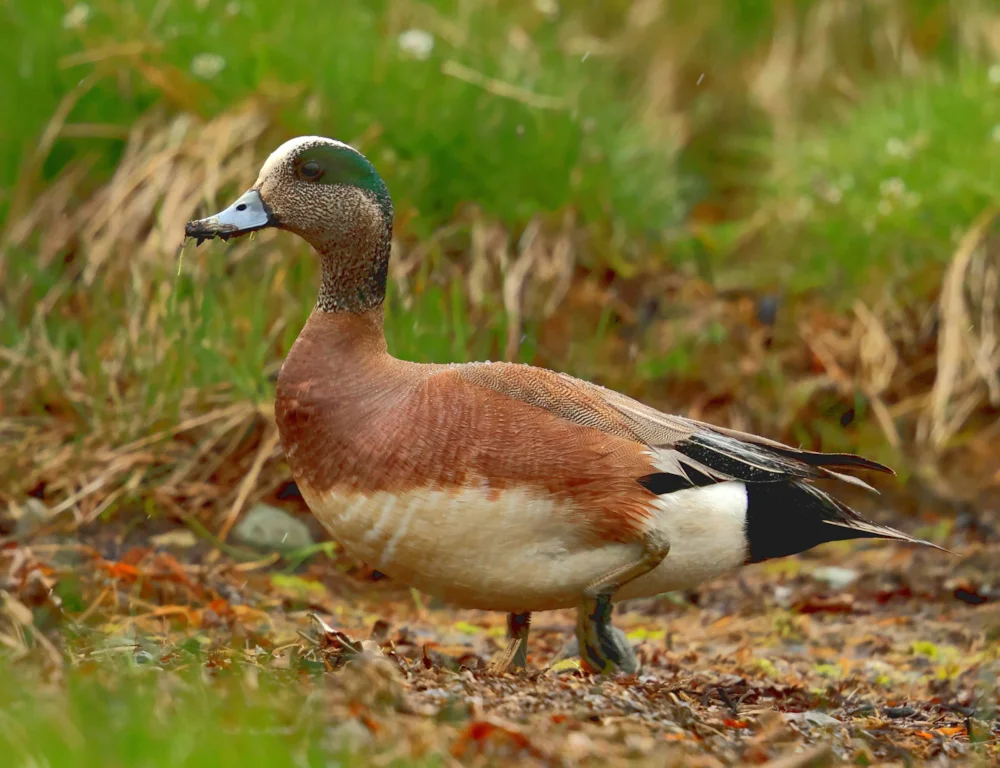
American Wigeon, Killiechronan, Mull, Argyll (Stephen Burch).
In Shetland, a breeding-plumaged Pacific Diver was photographed off Brough Lough, Fetlar, on 18th, with another individual in Co Cork off Toormore on 21st. The week’s only White-billed Diver was off Tiumpan Head, Lewis, Outer Hebrides, on 21st.
The Squacco Heron was last seen at Combe Valley CP, East Sussex, on 17th. Black-crowned Night Herons continue to be found, with birds at 16 sites this week including new discoveries at locations as diverse as Sullom, Shetland, from 21st, Benbecula, Outer Hebrides, on 17th, Abberton Reservoir, Essex, on 20th (two birds) and Hilfield Park Reservoir, Hertfordshire, on 21st. No fewer than nine Purple Herons were noted, all but one of which were in England. At least 17 sites produced Glossy Ibis, with the high count being 12 over Botley Wood, Hampshire, on 16th.
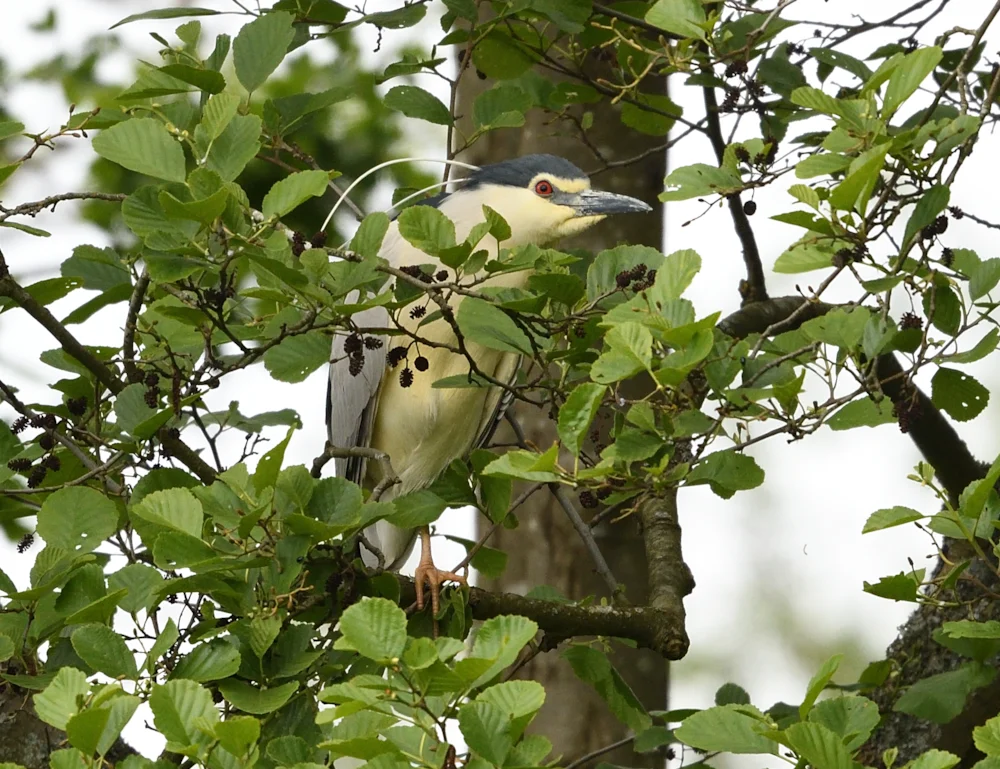
Black-crowned Night Heron, Hilfield Park Reservoir, Hertfordshire (David Hutchinson).
Having last been seen on the Isle of Wight at midday on 14th, it was something of a surprise to hear that the Yellow-billed Kite had been photographed drifting over Polgigga, Cornwall, early afternoon on 15th. Where will it pitch up next? Its south-westerly movement coincided with the now-annual dispersal of Red Kites into the South-West, with some positively huge tallies reported from West Cornwall and even the Isles of Scilly. Some 200 birds were over Nanjizal, Cornwall, on 17th, with no fewer than 133 counted over St Mary’s, Scilly, four days later. Black Kites were reported from six Cornish sites (might some of these been the Yellow-billed?), while there were also reports of that species from Dorset, Hampshire, Pembrokeshire and Clwyd. Migrant European Honey Buzzards were logged at a dozen localities.
The week’s only Pallid Harrier was the bird at Long Mynd, Shropshire, to 20th. It seems a better spring for Montagu’s Harriers in comparison to the last few years at least, with several mobile birds at large in England, including males in Cambridgeshire, Essex and Norfolk. In Ireland, the male was relocated at Belfast Airport, Co Antrim, on 17th, and a female was at Tacumshin, Co Wexford, on 19th. The female Red-footed Falcon was last noted at Stodmarsh NNR, Kent, on 16th.
A Kentish Plover proved all too brief at Saltfleetby NNR, Lincolnshire, on the morning of 17th. Elsewhere, a particularly handsome male appeared at Landguard NR, Suffolk, on 18th before moving south to The Naze, Essex, the following day. In fact, photos suggest that the same bird was also at Minsmere RSPB earlier in the month (and at The Naze before that).
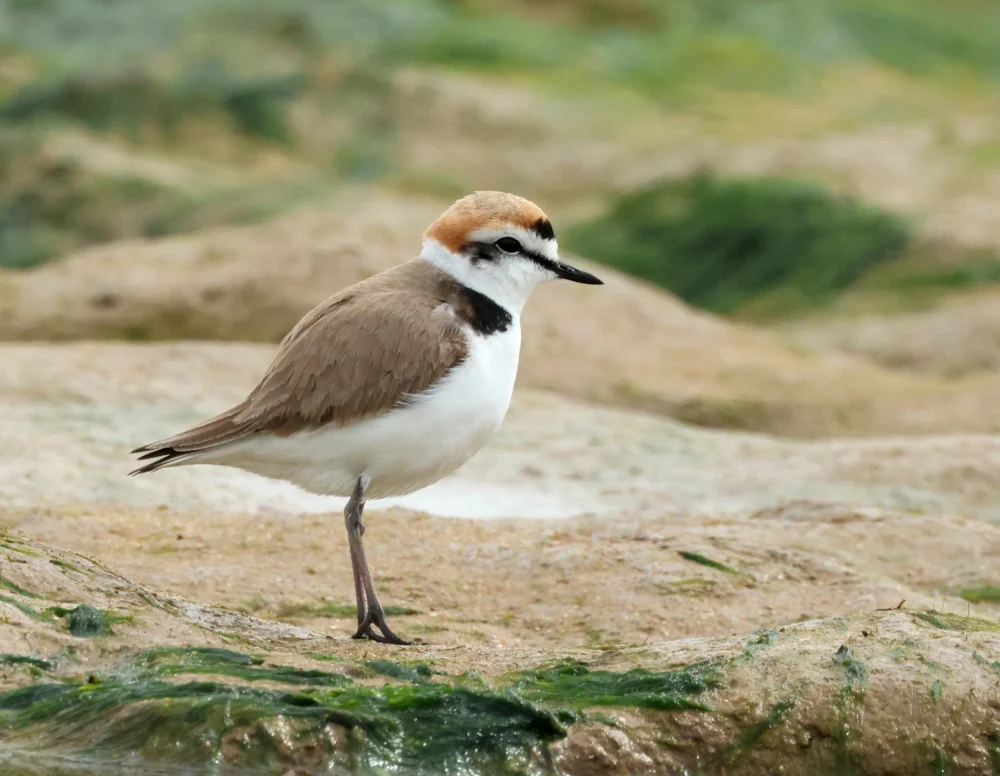
Kentish Plover, The Naze, Essex (Richard Jeffree).
As one would expect for the dates, it was a good week for rare shorebirds. Three Broad-billed Sandpipers were found, commencing with one at Burnham Deepdale, Norfolk, for a couple of hours on the morning of 18th and followed by records from Papa Westray, Orkney, on 20th and Foula, Shetland, on 21st – the last two involving the same bird, perhaps. Papa Westray also bagged a Semipalmated Sandpiper on 20-21st and, extraordinarily, this Nearctic visitor could be watched alongside the Broad-billed at times. Norfolk’s Long-billed Dowitcher commuted between Ken Hill Marshes and Holme Dunes. Four Pectoral Sandpipers were reported, including a new bird on Unst, Shetland, while a stunning American Golden Plover at Frampton Marsh RSPB, Lincolnshire, on 17th seemingly relocated to Paull Holme Strays, East Yorkshire, from 19-21st. Black-winged Stilts were at a dozen sites, including four at Dungeness, Kent, on 17th which then relocated to nearby Worth Marshes, plus singles in Nottinghamshire, Cheshire, Gloucestershire and Lancashire – it’ll be interesting to see how many pairs nest successfully this summer.
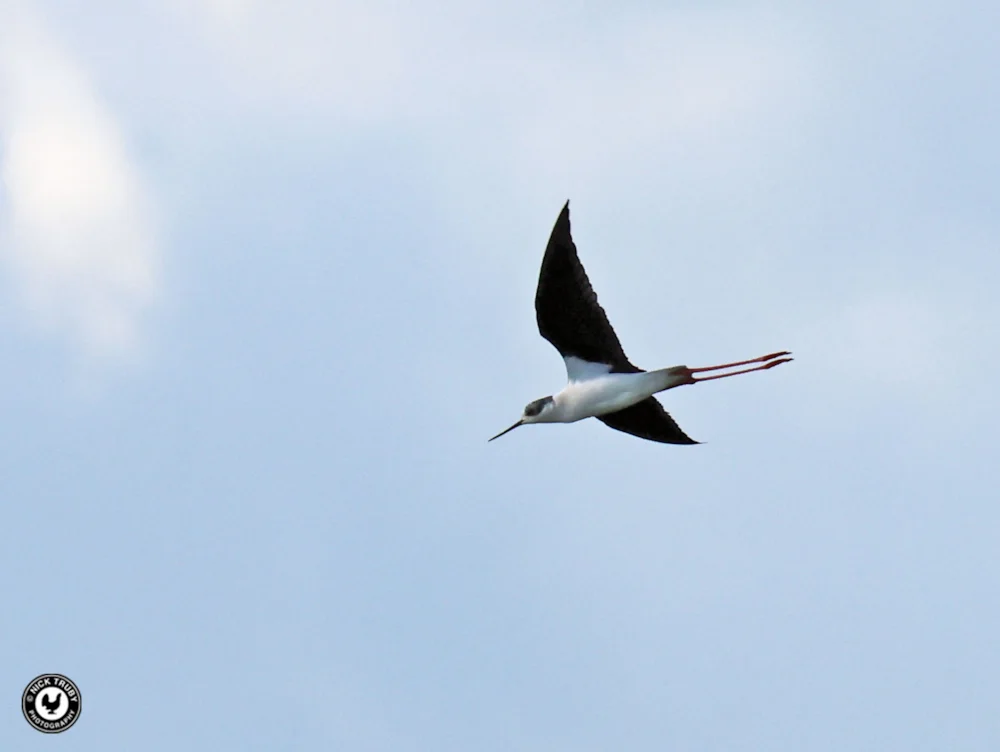
Black-winged Stilt, Otmoor RSPB, Oxfordshire (Nick Truby).
The Norfolk Broads have an uncanny knack of luring in Caspian Terns, with the hot-spot of Hickling Broad NWT attracting the first British record of 2023 on 17th – unusually, from a British perspective, in the form of an immature. It proved characteristically mobile and was seen at several sites in the area, but was still around at the end of the review period. Another was a brief visitor to Pegwell Bay, Kent, on 19th. In a similar vein, Seaforth LWT in Lancashire has a long history of attracting White-winged Terns and this week produced a cracking adult on 19-20th. The long-staying Bonaparte’s Gull hung on at Hayle Estuary, Cornwall.
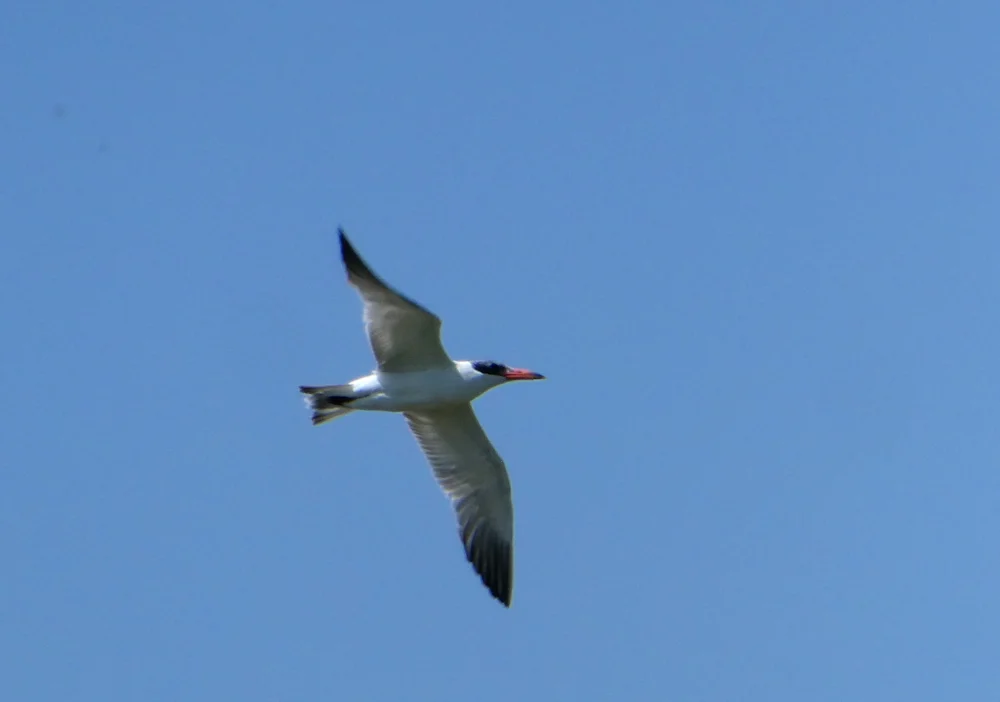
Caspian Tern, Hickling Broad NWT, Norfolk (Pauline Chilton).

White-winged Tern, Seaforth LWT (Permit only), Lancashire (Steve Young).
European Bee-eaters were prominent on the airwaves this week, with a dozen over Driffield, East Yorkshire, on 18th having reached the coast by the following afternoon, flying south out across the Humber at Spurn YWT before roosting at Gibraltar Point NNR, Lincolnshire, that night. After a few hours at ‘Gib’ the next morning, the birds departed for Norfolk and were later seen overflying Hickling Broad NWT a few hours later. Presumably this same group was responsible for sightings at Butley and Chillesford in Suffolk on 21st. Other records included three at Tarmon, Co Mayo, on 19th and one over Green Lane CP, Derbyshire, on 21st.
No fewer than five Great Reed Warblers were on offer, with new birds in Suffolk (Minsmere from 16th), Nottinghamshire (Idle Valley NR on 19th) and Lancashire (Martin Mere WWT on 21st) in addition to lingering songsters in Norfolk and Somerset. Iberian Chiffchaffs remained on territory in Gloucestershire and East Sussex. A singing subalpine warbler sp was at North Foreland, Kent, on 21st but proved frightfully elusive; another was on North Ronaldsay that day. A female Western Subalpine Warbler was trapped at Portland on 20th and the male continued on Mainland Shetland all week – as did the male Eastern Subalpine Warbler at Lerwick. Sadly, a report of a possible female Sardinian Warbler at Flamborough Head, East Yorkshire, on 15th wasn’t firmed up.
Scarce migrant totals included four Golden Orioles, six Hoopoes, three Bluethroats (the singing White-spotted Bluethroat at Slimbridge WWT, Gloucestershire, plus two females in the Northern Isles), two European Serins, four Grey-headed Wagtails, seven Red-backed Shrikes and singles of Woodchat Shrike and Icterine Warbler – this last bird, on Isle of May, Fife, on 21st, being the first of its kind in Britain this year. A female Citrine Wagtail visited Balnakeil, Highland, on 15th and a Shore Lark was at Norwick, Unst, Shetland, on 16th.

Bluethroat, Fair Isle, Shetland (Patrick Safford).
Western Palearctic
Staggering news from Turkey concerned a Southern Carmine Bee-eater photographed among a flock of European Bee-eaters at Kızılırmak Delta on 21st. Although a long way from being an anticipated WP vagrant, the bird appears in good condition, is apparently virtually unknown in captivity and is a short- to medium-distance migrant. In theory, there is nothing to suggest it hasn’t arrived in Europe with northbound European Bee-eaters and, unless damning evidence (such as a plastic ring) is revealed, it should surely be considered of wild origin.
Rather gripping for Northern Isles birders was the appearance of a male Pallas’s Reed Bunting on Utsira, an island off the south-west Norwegian coast, on 21st. This was Norway’s first and is a species that hasn’t occurred on British soil since 1990. Another Norwegian island, Sula, attracted a Green Warbler on 21st, while White-tailed Lapwing and Pacific Diver were among the other Norwegian rarities on offer.

Pallas’s Reed Bunting, Utsira, Rogaland (Atle Grimsby).
An adult Laughing Gull was in Nice, France, on 18-19th, with both Bridled and Elegant Terns still in the north-west of the country. Both Steppe and Lesser Spotted Eagles were noted in The Netherlands. A selection of other notable records included Greece’s fifth Green Warbler trapped at Antikythera, Romania’s second Masked Shrike at Vadu on 17th, Denmark’s second Pacific Diver off Skagen on 19th and, bizarrely, the fifth Eurasian Spoonbill for Belarus at Myshanka.
